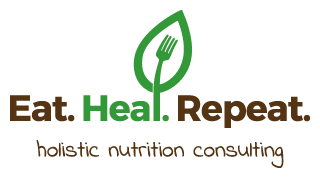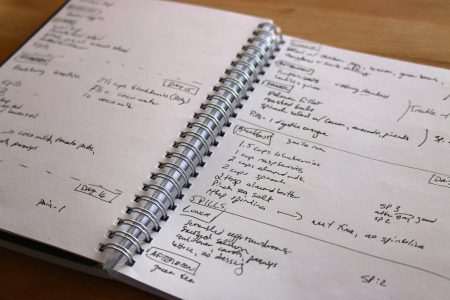Why keep a food, activity and mood journal?
Tracking how (much) you move, what you eat and drink, and how it makes you feel? Sounds like work… Here are some reasons why you might want to try it anyways, at least for a few days:
Probably the greatest benefit of journaling is what YOU get out of it. YOU can:
- Figure out which foods make you feel energized, and which foods make you feel lethargic
- Understand your body’s cues for hunger and satiety, and how much food feels ‘just right’
- Become aware of emotional or situational motivators to eat, over- or under-eat
- Realize what makes you thrive (balanced meals, exercise, relationships,..) and seek those things out
- Get motivated to make good food choices from here on out
- Turn into a mindful eater (if you’re not one already)
Some of the information will help your nutrition consultant design a wellness program just for you.
They can:
- Identify what nutrients are lacking, based on what you (don’t) eat
- Suspect foods that may be problematic for you
- Pinpoint nutritional ‘heroes’ (superfoods) and ‘bandits’ (empty calories, toxins, etc.)
- Analyze your eating habits and food choices, and provide new choices and options that work for you
What should I include?
Include what you eat and drink on a typical day (track at least three days, with one day being a Saturday or Sunday).
Include what you actually eat (every morsel and sip), not what you wish you ate or suspect you should be eating.
Include the exact amount of food eaten and important variations (e.g. instead of ‘milk’, put ‘8 oz. skim milk’ or ‘1 cup 2% milk’, etc.). If the food is prepared at home or in a restaurant, please include how it is cooked (e.g. grilled vs. fried).
In addition to your intake (food and drinks), a good food journal will include the following aspects:
Time: Write the time of day you consumed a meal, snack or drink; when a symptom started, etc.
Where and with whom: Note what room of the house you were in when you ate, and if you were standing up, by a table or on a couch. If you ate at a restaurant, on a park bench or in your car, write that location down. Also include who you shared a meal with, or if you were alone.
Feelings/energy/mood/symptoms: Record how you were feeling before and after the meal (e.g. lonely, tired, excited, content,…). In this section, you can also rate your hunger (H) or fullness (F) on a scale from 1 (none) to 10 (extremely). Finally, note down if you are experiencing a headache, nausea, constipation, etc.
Activities: In this section, list any activities you did throughout the day (e.g. gardening, a walk, a pilates class,…) and include when it started, its duration and intensity level (1 being slow and relaxed, 10 being out of breath, with your heart pounding).
Sample food and mood journal (excerpt):
| Time | Length of meal | Foods: type & amount |
Liquids: type & amount | Supplements Medications: type & amount | Where & with whom | Mood/energy/symptoms before meal | Mood/energy/symptoms after meal |
| 7:15 | 7 mins. | 1 plain bagel 2 Tbsp peanut butter |
8 oz. coffee, black 8 oz. orange juice |
1 Synthroid @ 6:30
|
On the couch
Alone |
Tired, grumpy, shaky, cold | Energized, warmer; slight headache |
| 11:30
|
15 mins. | 1 cup lettuce, ½ cup grilled chicken, 2 Tbsp shredded parm, 5 croutons, 2 Tbsp Caesar dressing | 8 oz. can diet coke
|
none | At the cafeteria, with coworkers (Paul, Mary) | H: 8, dizzy, ‘blah’ | F: 6, craving sweets, not content, headache is gone |
| 2:30 | 5 mins. | 5 Ritz crackers 10 peanuts |
8 oz. coffee 2 oz. skim milk |
1 Spectrum multi | At my desk, alone | Super tired, trying to concentrate | Calm but still tired |
Some journals include handy little checklists like the one below, but you can also add one yourself:
| Check off 8 oz. glasses of water you had today | 1 2 3 4 5 6 7 8 9 10 11 12 13 14 15 16 (at least 8 cups a day is recommended) |
How specific does it have to be?
Be as specific as you can. Break complicated foods down by ingredient. For instance, instead of recording a ‘ham sandwich’, list ‘2 slices of whole wheat bread, 1 slice ham, 1 slice provolone, 1 slice tomato, 2 tsp mayo’.
Don’t just include what you eat, but also precise quantities. If you don’t know what an ounce or a cup of food looks like, list ‘a palm-size salmon filet’, ‘a thumb-size piece of cheddar’, etc.
TIPS TO GET THE MOST OUT OF YOUR JOURNAL
- Do not change your eating habits while you are keeping your food diary, unless your doctor or nutrition consultant has given you specific instructions to do so.
- Be honest. You don’t gain anything by trying to look good on these forms. Also, ‘cheating’ or ‘leaving things out’ makes us feel guilty, and that’s not a healthy emotion – especially around food. Get into the habit of not feeling guilty about any food choice. Instead, strive for balanced and nutritious meals most of the time.
- Don’t forget to record snacks or random odds and ends you eat, like a cookie offered at work. Make a commitment to write down everything that you consume with no exceptions.
- Review your food journal at the end of each day and complete it as best as you can.
- If you’re working with a nutrition pro, be sure to start journaling right away. Bring the completed forms to your first nutrition appointment, or better yet, email them in a few days in advance. You can fill in the forms on your computer and hit save each time; or you can print them, fill them in by hand (legibly), and then scan them.
- Another great option is using a handy food tracking app. Some of my favorites (mostly because they are free and have a good library of commonly eaten foods and meals) are MyFitnessPal and MyPlate by Livestrong. With these, you can just print a PDF report of your intake and email or bring that to your nutrition consultation. However, with these trackers, be sure to take ample notes (space is provided) on how you feel before and after your meals, where and with whom you’re eating, etc. – it’s not just about the calories…

